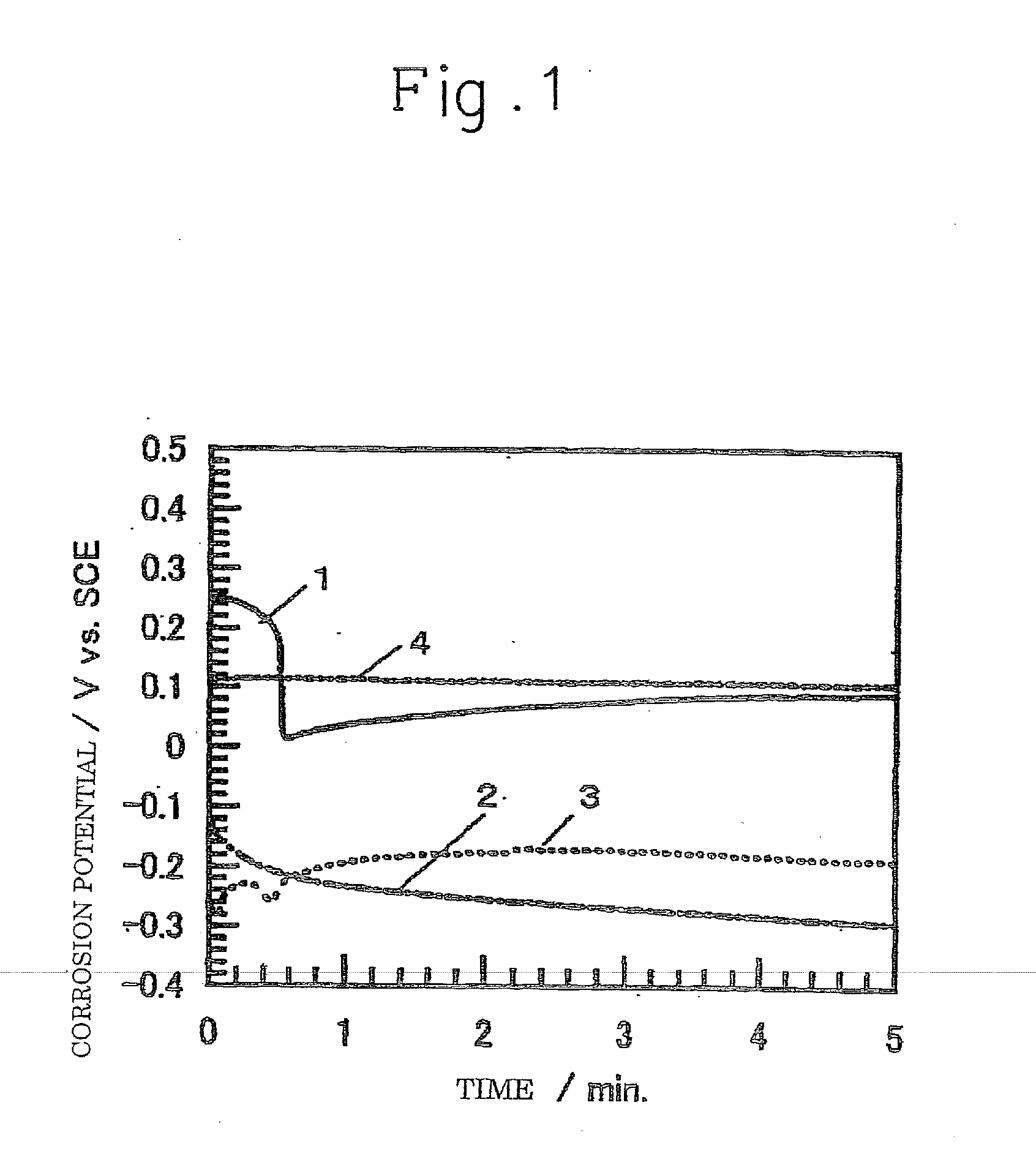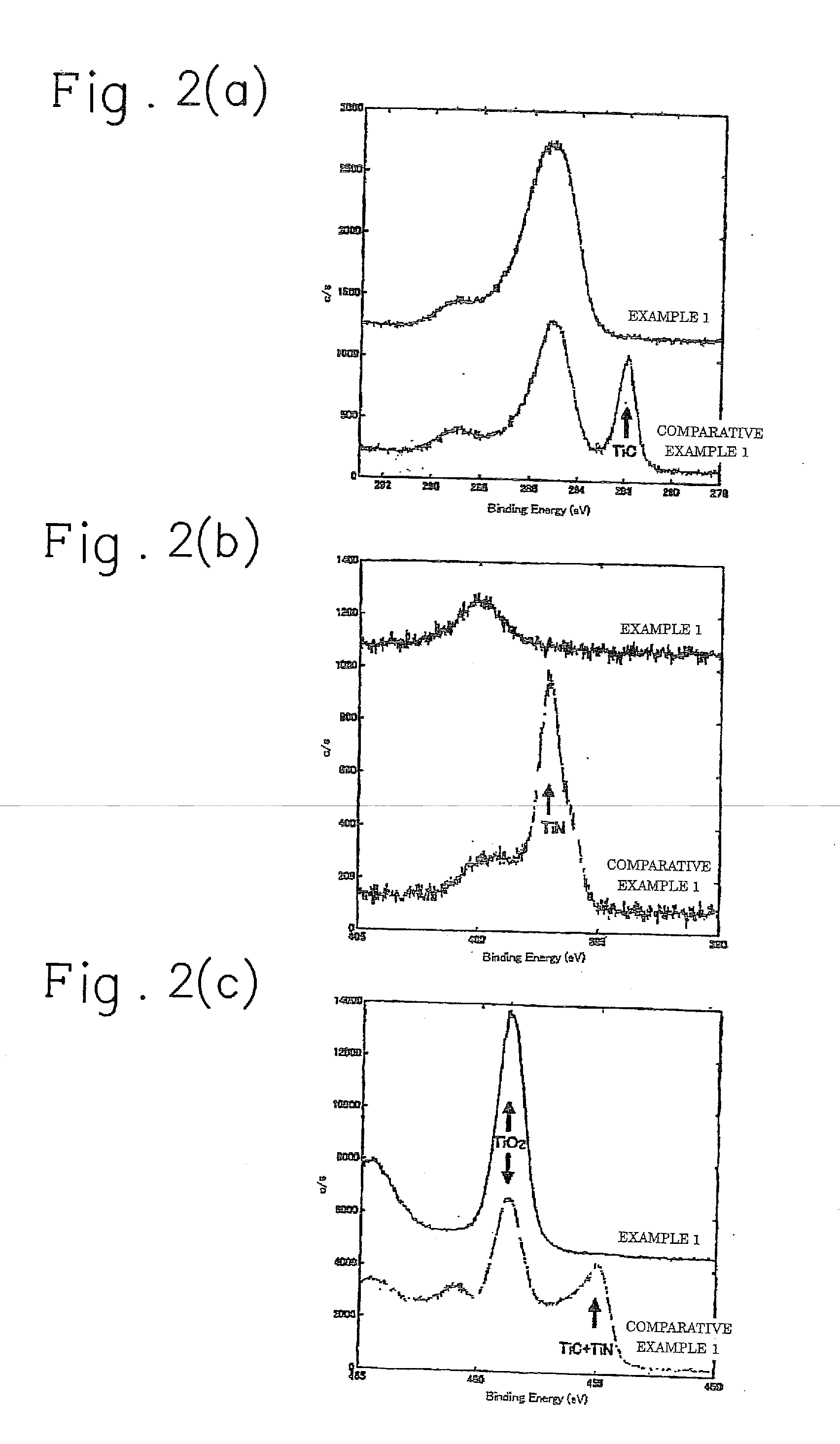Titanium material and method for producing titanium material
a technology of titanium material and titanium material, which is applied in the direction of manufacturing tools, solid-state diffusion coating, superimposed coating process, etc., can solve the problems of large yield loss, large yield loss, and large yield loss in titanium foil production, and achieve excellent surface lubricity of titanium material, excellent surface homogeneity and corrosion resistance of titanium material, and excellent surface characteristics
- Summary
- Abstract
- Description
- Claims
- Application Information
AI Technical Summary
Benefits of technology
Problems solved by technology
Method used
Image
Examples
examples
[0099]While the present invention is further described with reference to examples below, the present invention is not limited thereto.
[0100]Using an industrial pure titanium material (JIS Class 1) in accordance with JIS, a hot coil having a thickness of 4 mm was made, and then was subjected to annealing and pickling, and was cold rolled until the work thickness reached 0.5 mm.
[0101]Subsequently, annealing and pickling were performed, and a titanium foil having a thickness of 0.2 mm was produced by cold rolling.
examples 1 and 2
[0102]The titanium foil having a thickness of 0.2 mm was bright annealed in a bright annealing furnace utilizing 100% argon gas with a dew point of −40° C. at 720° C. for 2 minutes.
[0103]After the bright annealing, electrolytic pickling was performed in 6 wt % nitric acid aqueous solution at 25° C. with a Coulomb amount of 20 C / dm2 for making the titanium foil in Example 1.
[0104]The titanium foil in Example 2 was made as in Example 1 except that electrolytic pickling was performed with a Coulomb amount of 80 C / dm2.
reference example 1
[0107]The surface of the titanium foil having a thickness of 0.2 mm was dry polished with an emery paper 1200 grit to produce the titanium foil in Reference Example 1.
[0108]
[0109]Each of the titanium foils in Example 1, Comparative Examples 2 and 3, and Reference Example 1 was immersed in 5 wt % sulfuric acid aqueous solution for the measurement of the corrosion potential variations with time. The results are shown in FIG. 1.
[0110]From FIG. 1, it is recognized that a sharp potential decrease occurred to the titanium foil in Comparative Example 1 (“1” in FIG. 1) within about 30 sec from the beginning of the measurement, showing that components easily soluble in acid were present in the surface, of which composition was inhomogeneous.
[0111]The titanium foils in Reference Example 1 (“2” in FIG. 1) and Comparative Example 2 (“3” in FIG. 1) indicated negative potentials from the beginning of the measurement, showing that these surface films had poor corrosion resistance.
[0112]On the othe...
PUM
| Property | Measurement | Unit |
|---|---|---|
| Pressure | aaaaa | aaaaa |
| Pressure | aaaaa | aaaaa |
Abstract
Description
Claims
Application Information
 Login to View More
Login to View More - R&D
- Intellectual Property
- Life Sciences
- Materials
- Tech Scout
- Unparalleled Data Quality
- Higher Quality Content
- 60% Fewer Hallucinations
Browse by: Latest US Patents, China's latest patents, Technical Efficacy Thesaurus, Application Domain, Technology Topic, Popular Technical Reports.
© 2025 PatSnap. All rights reserved.Legal|Privacy policy|Modern Slavery Act Transparency Statement|Sitemap|About US| Contact US: help@patsnap.com



